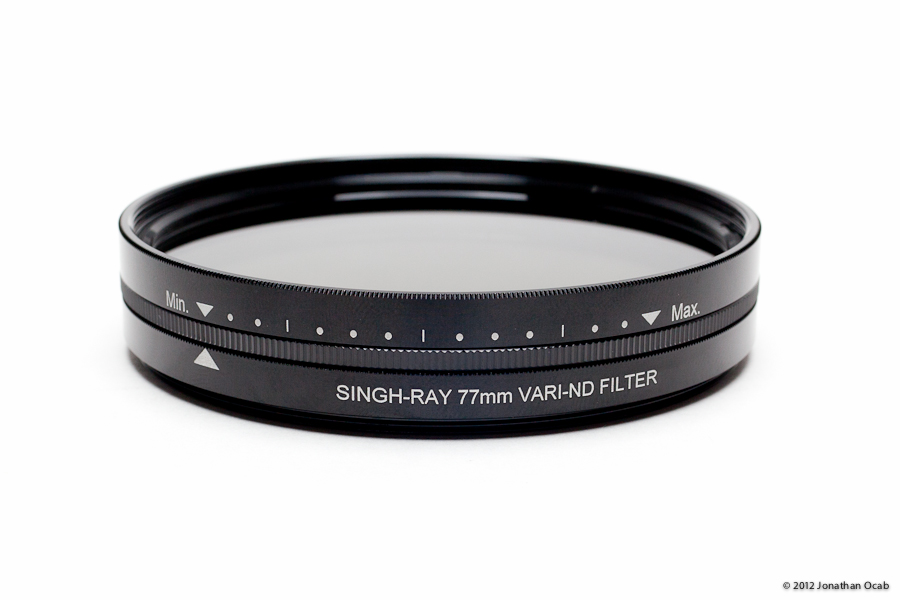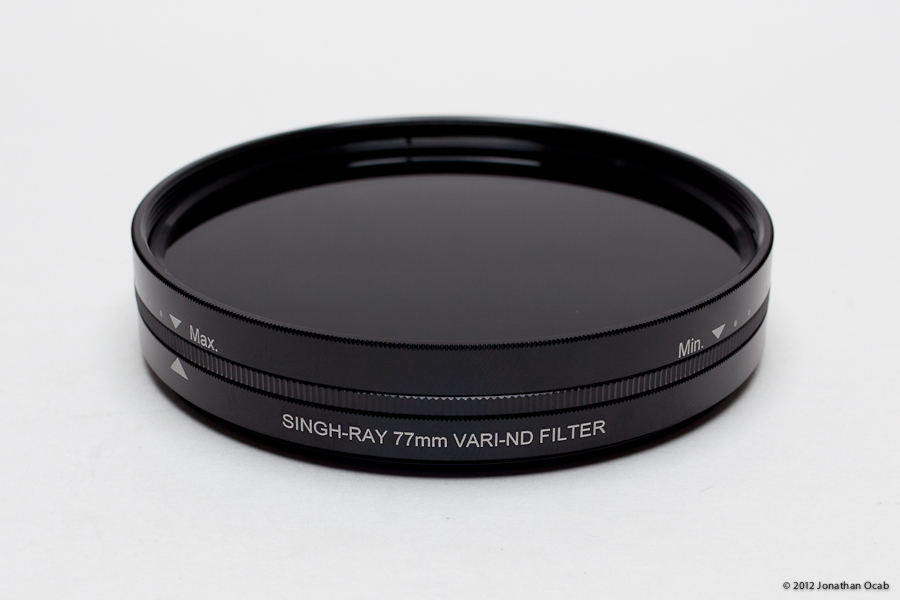I have owned the Singh-Ray Vari-ND 77mm standard mount for over a year and it is the only ND filter I own (and carry in my bag).
While a variable ND filter is extremely versatile since you have a wide range of f/stops you can adjust for (without having to own several ND filters and stack), I have the issue of constantly chimping when adjusting the filter. When I say ‘chimping’, I mean I take a shot, turn the filter to increase/decrease the amount of light, and take another, repeating until I find the right amount of light adjustment.
The Singh-Ray Vari-ND filter does have hash/index marks on the filter ring, but they are not ‘pre-calibrated’ to any specific amount of f-stop adjustment. Vari-ND style filters will vary from filter to filter, so the amount light reduction will not be exactly the same with respect to the index marks from filter to filter.
Here is a quote from the Singh-Ray Vari-ND web site product page:
The small evenly spaced “benchmark” dots you see on the Vari-ND filter ring between the “Min.” and “Max.” density settings are intended only as reference markings. They are NOT indexed to any specific density ratings nor do they represent calibrated exposure stops. They are useful to help you reset your Vari-ND Filter to a certain density setting you’ve previously selected.
In order for me to take advantage of those index marks, I decided to take the time and test how much light loss occurs at each index mark.

I used a rudimentary setup for the testing of the index marks. I put a page of a comic book (flat, uncoated/non-glossy) paper onto a wall in a room with little ambient light. I setup a Paul C. Buff Einstein with a 7″ reflector and faced it right at the page on the wall. Then I setup my Canon 5D Mark II with 85 f/1.2L II on a tripod right behind and above the Einstein.
I then took test shots at around f/8 or f/11 to set a correct exposure with the strobe. Using the histogram off the exposure, I threaded the Singh-Ray Vari-ND filter onto the lens, set the index to ‘Min’ (minimum) and took shots and opened up the aperture of the lens until the histogram matched up with the previous shot.
I proceeded to to do this with each of the other line marks between ‘Min’ and ‘Max’ on the scale.
The results for my individual Singh-Ray Vari-ND are as follows:
No filter to Min = 2 f-stop
Min to 1st line = 1/3 f-stop
1st line to 2nd line = 2/3 f-stop
2nd line to 3rd line = 1-2/3 f-stop
3rd line to Max = 4 f-stop
So if you add all that up, I can get a maximum total of 8-2/3 f-stops of light reduction (with a minimum of 2 f-stops). Singh-Ray advertises the Vari-ND as giving 2 to 8 f-stops, so it appears my filter is within their specifications.
What I found surprising is how the light reduction is exponential. The first two lines only give a total of 1 f-stop whereas the 3rd line to the Max line accounts for a whole 4 stops of light reduction. I thought it would be a gradual, consistent light reduction from mark to mark, but perhaps that’s not how Vari-ND filters work.

Anyway, my Singh-Ray Vari-ND may not be exactly the same as yours, so you will have to do your own testing with your own Vari-ND filter if you want to figure out how much light reduction each index mark works out to on your own filter.
Note: The Singh-Ray is considered the best variable ND on the market. But in the past year or so, there are a few more options available for variable ND filters at lower price points. The Fader ND by Light Craft is one popular option.

Comment on this post